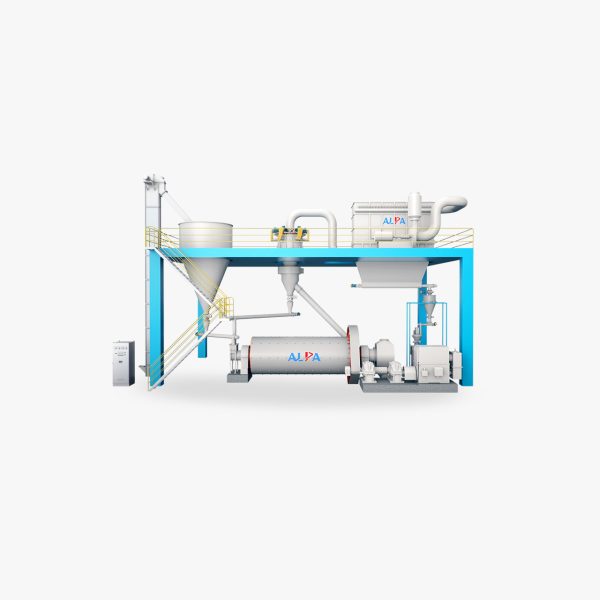
There are two main ways to deep process calcium carbonate, namely ultrafine grinding and surface modification. Usually these two processes are done separately. In recent years, the integrated deep processing technology of calcium carbonate has attracted more and more attention. The integrated process refers to surface modification while ultrafine grinding.
Calcium carbonate is one of the most commonly used fillers at present, and is divided into light calcium and heavy calcium. Heavy calcium is widely used as filler in industries such as rubber, coatings, paper and plastics due to its high quality and low price. With the development of modern composite material technology, activated calcium carbonate with various excellent properties has become an important functional enhancer and plays an increasingly important role in composite materials. In order to transform calcium carbonate from a general volume filler into a functional filler, it must be further processed. There are two main ways to deep process calcium carbonate, namely ultrafine grinding and surface modification. Usually these two processes are done separately. In recent years, the integrated deep processing technology of calcium carbonate has attracted more and more attention. The integrated process refers to surface modification while ultrafine grinding.
The mechanism of calcium carbonate integrated process
Using a jet mill as the main equipment, heavy calcium carbonate was subjected to ultra-fine grinding and surface modification at the same time, and the mechanism of the integrated calcium carbonate process was revealed: the mechanical energy of the high-speed airflow acting on the minerals, part of which is used to crush the minerals , the other part is used to change the mineral crystal lattice and surface properties, to activate the mineral surface, which is beneficial to the adsorption and chemical bonding between the mineral surface and the modifier, so that the modifier molecules can evenly coat the mineral surface. At the same time, the modifier can play a role as a grinding aid during the crushing process, which is beneficial to ultra-fine crushing. The surface free energy of the modified minerals is greatly reduced. The reduction in surface free energy leads to a reduction in the minimum stress for particle crushing and fracture. As a result, the Crushing becomes easier and the effect increases.
Main equipment for calcium carbonate integrated process
In existing research, the main crushing and modification equipment used are airflow mills or airflow grinding and surface modification integrated machines. In addition, a domestic crushing equipment company connected the modification equipment in series with the crushing equipment, and the crushed powder was directly modified, changing the previous two-step method into one step, thus achieving the integration of ultra-fine crushing and modification of materials. , this integrated process is implemented through a modified grinding unit, which is different from the previous airflow grinder or airflow grinding and surface modification integrated machine.
The significance of calcium carbonate integrated process
Usually, to achieve uniform coating of heavy calcium carbonate with modifiers, it needs to be carried out under conditions of higher temperature, longer time and higher mechanical force, which in turn will lead to an increase in the production process of heavy calcium carbonate. The grinding process breaks down the particles and creates a larger, newly created surface. These newly generated surfaces have high surface energy and are easy to adsorb surface modifiers, so they are conducive to achieving uniform coating of heavy calcium carbonate by the modifier under normal temperature conditions.
Through the calcium carbonate integrated test, it was concluded that surface modification treatment during airflow crushing can increase the discharge rate of ultra-fine heavy calcium powder. When the crushing airflow temperature is 60°C, the coupling agent in the modifier solution will When the mass fraction is 50% and the modifier solution flow rate is 1.5mL/min, the crushing and discharging rate of heavy calcium particles increases from 21.0g/min to 56.7g/min, and the discharging rate increases by 170%. Integrated processes improve production efficiency and reduce costs.
As two important deep processing technologies for non-metallic minerals, the combination of ultrafine crushing and surface modification is of great significance to strengthening the production process, improving production efficiency, reducing production costs, and thus increasing the competitiveness of products.
